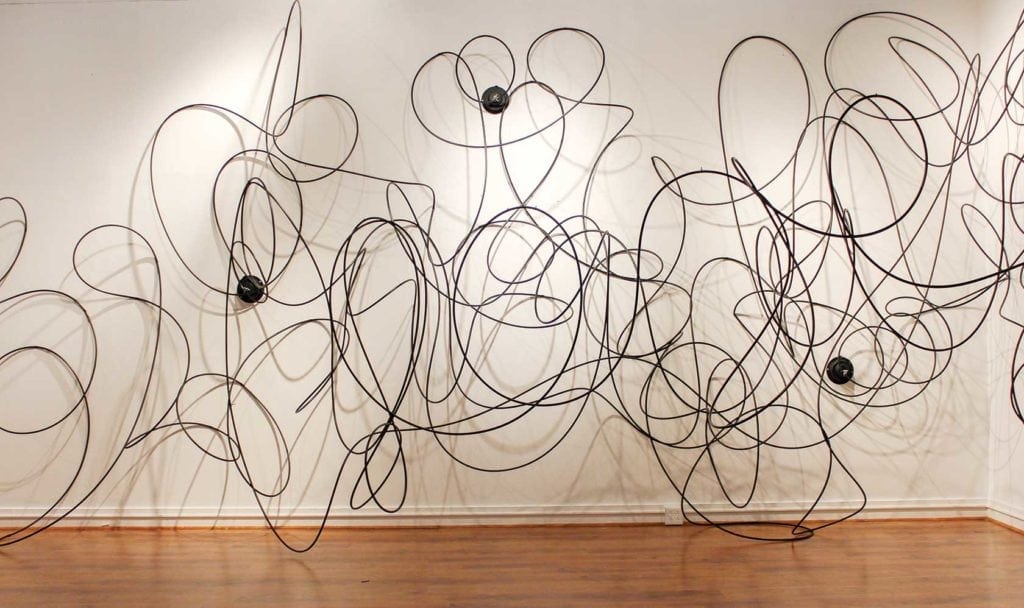
Spanish artist Rosana Antoli’s first solo exhibit in the United States, “Rosana Antoli: Crossroads (Choreographies),” runs through June 10 at the Boston University Stone Gallery. The multidisciplinary project explores the concept of movement in social spaces and the movement of identity that comes with a globalized world.
Antoli enjoys a wide-ranging reputation in Europe for her black cable installations and avant-garde multimedia projects. “Crossroads” features a wall of delicately intertwined black cable strung in loops and abstract patterns. Two revolving circles of cable against the wall gently nudge the other pieces, their actions impacting the movement of the work as a whole. “It’s about the idea of movement and social choreography,” says co-curator Raquel Peula.
“Crossroads” examines both the social choreographies that hit on a local level, and the identity politics that come from an increasingly globalized world. It’s as though Antoli strode into the human psyche and pulled back a wall, revealing the mass of cables, the ingrained social commands that dictate behavior. Alternatively, as the world expands and people see other places, customs and cultures, the opportunity to shed those cables grows, and people discover more spaces to craft their own identity.

Rosana Antoli’s “Crossroads (Choreographies)” explores the concept of movement in and through social spaces. Photo: Celina Colby
Forging paths
The use of cable is an interesting choice, reflecting telephone cables, Internet cables and other technological devices that bring us to new worlds from inside our living rooms. The installation is paired with a video presentation and several small abstract paintings. On the floor are dashed black-and-white lines, a symbol of steps taken. Do viewers follow them or forge their own paths through the exhibit? “When people come visit the show they become part of the work,” says Peula.
A panel featuring Antoli, Alejandra St. Guillen, director of immigrant advancement from the City of Boston and Jean Jackson, professor emerita of anthropology at MIT accompanied the exhibition. The panelists discussed how the migration movement has impacted both personal identities and art.
Identity was an important factor for the curators as well. They wanted to feature an exhibit on globalism and they chose Antoli very specifically for the project. Peula says, “We had to choose someone who could fit into the contemporary art world in Boston, and we wanted the artist to be a woman. We felt that women are underrepresented in the arts.”
A visit to “Crossroads” sparks some interesting questions. What are the cables tucked away inside your brain? What social practices do you follow without thinking about it? And most importantly, what path will you take from here?







